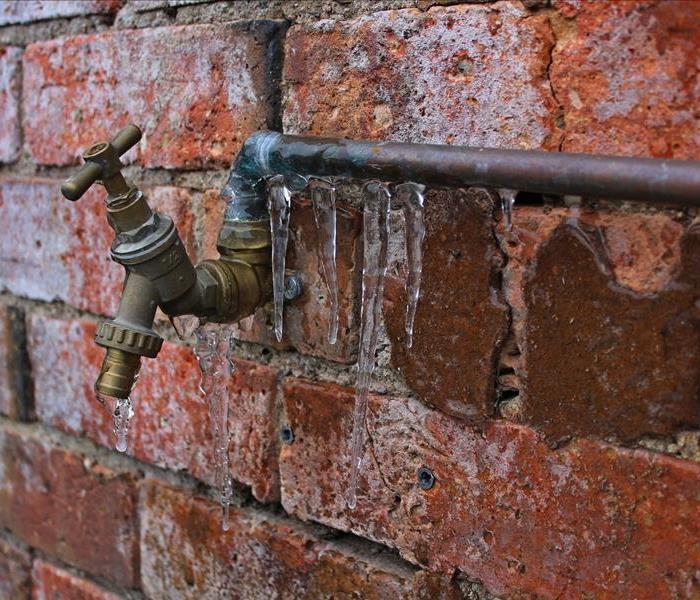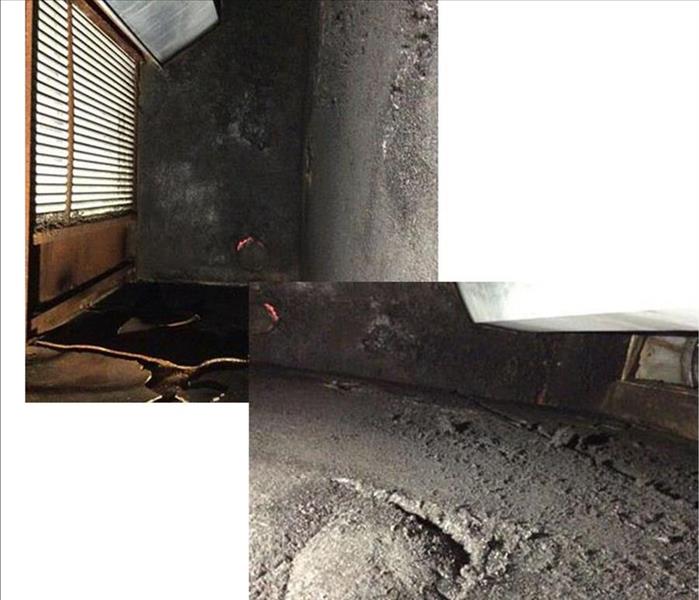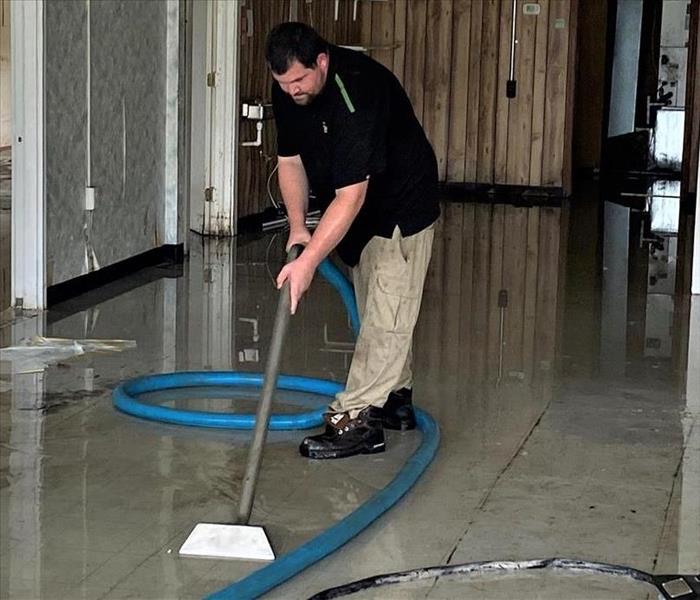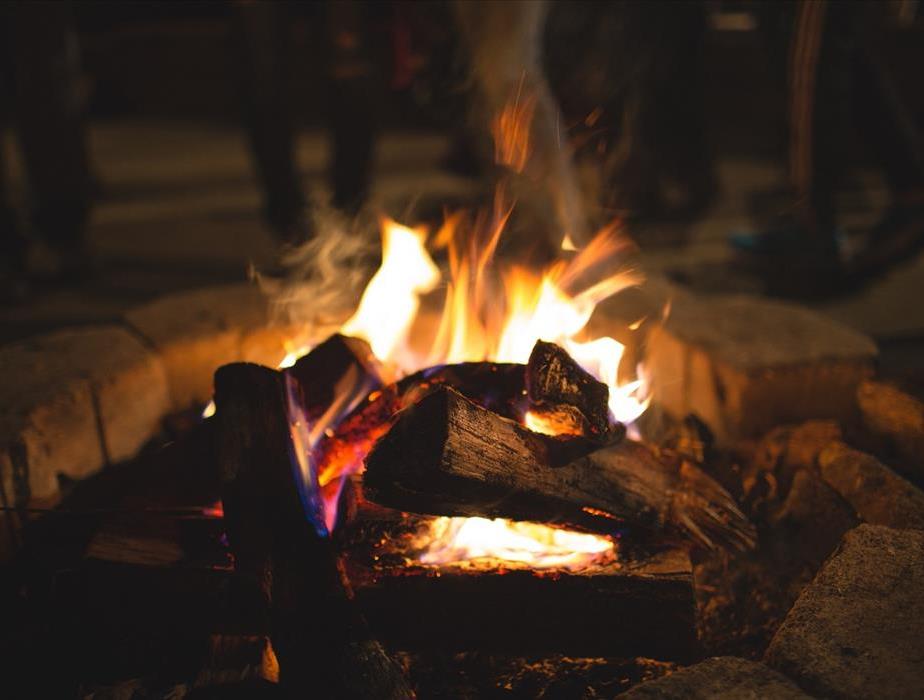Recent Posts
Commercial Cleaning
7/24/2024 (Permalink)
Commercial properties often require complex solutions for cleaning up messes. From isolating potential biohazard issues, to being able to continue business operations while the cleanup efforts are happening, there are many factors involved.
In a retail environment a fast response is especially important to help prevent inventory loss from the damages, or to be able to allow customers to come back into the store. Our team will come in an expertly handle any cleaning of your shelves, displays, and even your merchandise, helping you get back to business as usual as fast as possible. We are a 24/7 business, so if needed we can work on your schedule, allowing you to keep your storefront operational while our work continues after hours.
In healthcare facilities, biohazard cleanup can present its own set of issues. Without the proper protocols and training it can be possible for cross contamination to happen and for things like mold to spread to other areas of the facility. Our highly trained professionals will quickly assess your needs and work with environmental and infection control teams to help ensure all health certifications are obtained prior to completing the job. Our teams are trained to handle all of the complexities involved with the cleanup and restoration of medical facilities including HIPPA and the proper disposal of medical waste.
Property managers can also benefit from our commercial cleaning services. We are able to follow strict isolation practices to help ensure that other tenants don’t experience any issues while we’re working in other units and their daily lives are not interrupted.
These are just a few examples of how our commercial cleaning services can help you and your business get back to operation as normal after a loss. Your local SERVPRO is available 24/7, 365 days a year for any help you may need, so please give us a call and let us know what we can do for you.
Pet Preparedness for Storm
7/24/2024 (Permalink)
People often talk about making emergency preparedness plans and emergency kits for themselves and their families in the event of severe storms, but how much thought have you given to an emergency plan/kit for your pet? After all they’re part of the family so you’d never leave them behind, but how prepared are you to bring them along?
It’s important when you have pets to make sure that your emergency evacuation plans include places that are pet friendly. Many shelters and hotels do not offer accommodations for animals, so having a safe place to take your pets along with your family is crucial. You should also talk with friends or family to make sure that in the event that you can not evacuate with your pets someone is able to get them and care for them. Finally, you should get your pets microchipped. Keep this info up to date with correct addresses and an emergency contact that is outside of your immediate home. Emergencies can be hectic, and accidents can happen where pets get away from you, but if they are microchipped the likelihood of them being returned home safely is greatly increased.
Once your plan is in place you should build an emergency kit for you pets. Just like for your family’s emergency kit it should include the basic items needed for survival in the event of an emergency:
- Several days’ worth of food and water stored in airtight (waterproof for food) containers
- Medicine/First Aid Kit – talk with your veterinarian to find out what is best for your pets’ personal emergency needs
- Extra collar, ID tag, leash/harness - this should also include copies of your pets’ registrations and other documents in a waterproof container and electronically
- Crates or carriers for each animal
- Grooming items and sanitation needs - emergencies can be messy and having a dirty pet is less than ideal, additionally this should include things like a litter box/litter if appropriate or plastic bags
- A picture of you and your pet together - this can help people to identify your pet should you be separated as well as help prove ownership if needed
- Familiar items – As stressful as emergencies can be for you and your family, they can be even more so for pets who don’t understand what’s going on. Having familiar items like toys or blankets can help make your pet feel safe and more relaxed
Your local SERVPRO knows that during storms being prepared is key and having a plan for everyone involved makes things that much easier. We hope that this little checklist can help you keep your pets safe should any emergencies arrive.
Hardwood Floors Water Damage
7/8/2024 (Permalink)
 Hardwood Flooring
Hardwood Flooring
When your home experiences water damage, besides the structural concerns, one of the biggest can definitely be your hardwood floors. Hardwood floors are expensive and add both cosmetic and monetary value to your home so, if possible, you obviously want to try and avoid ripping them out and replacing them.
There are multiple factors that can play a part in our ability to restore your floors to preloss conditions:
- Moisture Levels – Hardwood floors have a very low moisture content. When water pools on them for long periods of time the moisture gets soaked into the wood and can take weeks to dry out on its own. This can cause the wood to buckle, have raised edges or have the panels separate from each other.
- Time – The type of wood in question plays a role in how quickly water is absorbed and then dried out. Wood rot happens when microbial growth in water is left without treatment in wood and begins to breakdown the wood. The faster that the water damage to your hardwood floors is addressed the more likely we are able to restore your floors and not have to replace them.
- Drying Methods – Both the kinds of woods used as well as the installation methods play a part in the decision of which drying method should be used to dry out your floors. Specialized equipment like drying mats can be used to dry large portions of your flooring at a time helping to speed up the process and ensure moisture readings are at the correct levels. Using the installation methods, wood density, and other factors, our trained technicians will determine just how long the mats should be left in place.
As you can see, there are quite a few factors that decide whether or not you will have to replace your expensive hardwood floors or not, and that it’s best left to the professionals to handle to help increase your odds of restoration. So, if you find yourself in need of water damage restoration, don’t delay and give us a call asap. Our team is waiting to see how we can help you today.
Commercial Fire Safety Tips
6/4/2024 (Permalink)
Fires can be absolutely devastating on commercial properties. According to the National Fire Protection Agency, non-residential structure fires accounted for almost $3.5 BILLION in property loss in 2020.
Are you prepared for a fire on your business’s property? Here’s a few common fire safety violations that can help keep your business, and more importantly your employees and customers safe.
Blocked Passageways and Exits – Hallways, doors, stairs, and any other paths to the outside of the building should never be obstructed. Even things like small packages left outside an office door in the hallway can become a life-threatening hazard should a fire evacuation take place.
Untested Smoke Detectors and Fire Alarms – These systems must be tested annually by a licensed professional. Be sure that all pull stations for the fire alarms are unobstructed and that smoke detectors have fresh batteries. When it comes to fires every second counts, and if your fire alert systems are malfunctioning it can be the cause of even more severe damage to your property or harm to your employees.
Damaged or Too Few Fire Extinguishers – Inspection and maintenance on fire extinguishers is easily overlooked when large commercial buildings can have so many to keep track of. ALL fire extinguishers should be FULL, classified for each area they are in, and inspected regularly to ensure they will function properly if needed. Without a functional fire extinguisher, a small containable fire can easily turn into a catastrophic large loss fire because no one was able to put it out before it spread.
These are just a few of the common violations that can happen in your business, so be on the lookout and make sure that you keep fire safety at the front of your mind for your business to help prevent dangers and costly repairs.
As always, if your business does suffer from a fire, your local SERVPRO® has a team of highly trained technicians with the knowledge needed to help you recover your business. We’re equipped to handle losses of all sizes and can take care of all aspects of the project, from clean up to reconstruction. Give us a call so we can help make it “Like it never even happened.”
Backyard Bonfire Safety
2/21/2024 (Permalink)
With cooler nights here, (and fewer mosquitoes) we may want to plan an outdoor evening on the deck or in the back yard with family or guests, gathering around firepits and clay chimineas.
Bonfires especially can be a great activity for the whole family, but it’s important to keep in mind the dangers of open flames and how to have a bonfire responsibly!
- You should always either use a fire pit purchased from the store or dig your own – Fire pits are a crucial part of keeping a bonfire contained where you want it to be and not have it spread. Be sure to also clear away brush from around the fire pit as well.
- Make sure your fire is a safe distance from houses, trees, powerlines, or anything that can be affected by the heat.
- Keep a bucket of water or a garden hose close by – accidents happen and being able to address them immediately is how to prevent things from getting worse.
- Use newspaper and small kindling to get the fire started, NOT gasoline or other accelerants.
- Never spray aerosols or toss canisters into the fire – The heat can make these containers explode and throw burning embers everywhere.
- Limit your fire size – It’s tempting to make a big fire, but you should make sure to keep your fire to a manageable size, no bigger than a few feet around.
- When you’re done, be sure that the fire is completely extinguished – stir the ashes around and use more water than you think you need to ensure there is nothing still smoldering. Embers can stay smoldering, hidden under a bed of ashes for hours and can be relit by the wind unexpectedly.
Bonfires are a lot of fun and a great way to spend time outside, just be sure that you are taking the proper precautions to do so safely.
Storm Readiness 101
1/8/2024 (Permalink)
As leaders in the restoration industry, we know firsthand the amount of damage that a storm can do to your home. Addressing the damage as quickly as possible is key to preventing further damage from occurring. We wanted to share some of the most important areas of your home that can be affected by storm damage, so you know where to check afterward.
- Basement – Areas of your home that are underground are some of the spots that are the most prone to water damage following a storm. Check around the edges of your basement floor and walls for signs of moisture. Make sure that drain spouts are properly angled away from your home and that there are no areas where water can pool next to your house.
- Foundation – Similarly to basements, your home’s foundation is particularly threatened by water damage after storms. Water from the outside can seep into cracks in your foundation and weaken it over time. Double-check check there is no standing water or signs of moisture in your concrete, and make sure that your sump pump is functioning properly.
- Crawlspaces – Water can pool in areas underneath your home and cause significant damage to the structural components, like mold and rotting wood.
- Windows – Over time the seals on your windows can degrade and strong storms can crack windows and window frames, allowing water to get into your home.
- Roof – Probably the most prone to storm damage, wind can damage shingles and throw broken tree branches all over your home. As one of the main sources of protection from the outside elements. It is crucial to inspect your roof after a storm. Ensure there are no leaks and remove any debris that could further damage your home. Check for any signs of moisture in your attic as well as this could be a sign that there is a hole somewhere you might’ve missed.
- Gutters – Strong winds and falling branches can damage your gutters or even completely rip them off the side of your house. Your gutters are essential in preventing water from getting into your home and directing it away from your home’s foundation. Make sure that your gutters are in good condition and free from any debris that may clog them.
While storm damage may not always be 100% preventable, hopefully, these tips can help you prevent any further damage from happening, and if you do happen to find any signs of damage to your home after a storm. Our technicians are here to help. We’re available 24/7, 365 days a year, so don’t wait, give us a call and let us know what we can do for you.
Temperatures are dropping, is your home ready?
1/5/2024 (Permalink)

With winter fast approaching and colder weather on the way, is your home ready to keep you and your family dry? Check out these best practices to help prevent winter water damage to your home! • Prevent frozen pipes and pipe bursts o Any faucets connected to pipes in unheated areas (attic, crawl space, outside) are more likely to freeze when the temperature drops. Be sure to let cold water drip from those faucets to help prevent freezing. o If you plan on leaving your home for multiple days during freezing temps leave your heat on. Heating costs may rise a bit, but comparatively, to a burst pipe in your home, you’ll be happy you did. • Prevent ice dams o When warm air from your home heats the roof and melts the snow on the roof it collects in unheated areas and refreezes, making ice dams that limit drainage off the roof and can cause damage to your home. o Make sure to clear your gutters and downspouts so that water can drain off the roof and doesn’t collect anywhere to refreeze o Install gutter screens to help keep out debris build-up in gutters o If you live in an area with especially large amounts of snowfall, consider installing snow guards to prevent snow accumulation on your roof and lining under your shingles to prevent leaks as snow melts • Ensure you know where and how to shut off your water in case of an emergency o When pipes freeze or burst it is important to be able to respond immediately and prevent the issue from getting any worse. Make sure that you know where your water shut-off is and turn it off the second you discover a leak While the cold weather can bring potential damage to your home, taking the proper steps to get ready can help you enjoy the winter wonderland stress-free, and if disaster does happen rest assured that us here at your local SERVPRO are ready to help you make it “Like it never even happened.”
Duct Cleaning
9/14/2023 (Permalink)
 When was the last time you had your ductwork cleaned?
When was the last time you had your ductwork cleaned?
While most people know the SERVPRO brand for water and fire damage restoration, we also provide other crucial services to homes and businesses. One such service is duct cleaning.
Air ducts perform the essential functions of moving the air around your building, providing hot or cold air depending on the season, and helping to maintain proper air quality and circulation. Like everything else in your home or business, it requires regular maintenance and cleaning to perform at its best. Over time, ducts can be filled with dust and dirt particles, or even mold spores and other harmful contaminants. While your HVAC’s air filters are meant to help remove these things from the air, they don’t always get all of it, and a build-up can occur in the ducts. This buildup can limit airflow and ultimately affect your HVAC system’s efficiency. Not only will this increase your energy costs, but it can also make it harder to maintain a comfortable environment for your staff and customers. Not only are you losing efficiency and air quality by neglecting your air ducts, but if left long enough this dust buildup can become a huge fire hazard.
Air duct cleaning should be done roughly every three to five years, or more depending on the building and what it’s used for. If your business needs a duct cleaning give us a call or fill out our form online and let us know how we can help!
What to do before we arrive!
9/13/2023 (Permalink)
 Do you know where your water shuts off are located?
Do you know where your water shuts off are located?
No matter the size, water damage has the potential to cause some pretty big issues structurally to your home or business. You must work quickly to make sure that the damage does not continue to worsen because as long as the moisture is present damage can continue to occur. While we will always recommend using a professional water damage restoration company to help ensure that your property is thoroughly dry and there’s no lingering moisture hidden in the structural materials there are a few things that you can do to help mitigate any more damage from occurring before we arrive on scene:
- Shut off the source – If the source is a leaky pipe or appliance, you’ll need to shut off the water supply to that leak, If you don’t know how to shut the water off in your home you should learn as soon as possible as you never know when you may need to.
- Electricity – If accessible without going through the water, shut off the electricity to the affected area as soon as possible. Water conducts electricity very well and this poses a serious safety risk. Not only that but an electrical hazard is also a big fire hazard and the last thing you need is another form of damage to be added on top of the water damage. If you can’t shut off the electricity from the breaker safely you may need to leave and shut it off from the outside so that you’ll be able to move about the area without worrying about getting shocked.
- Additionally, you should never try and turn on any lights if the ceiling is wet.
- Excess water – Use mops, towels, etc. to soak up as much water as possible. Water damage increases by the minute. The more water you can soak up while waiting for us to arrive the less damage is likely to occur and it will allow us to start drying out your property faster.
How Smoke Odors Affect Your Home
9/11/2023 (Permalink)
 Now that the fire is out, how do you get rid of the order?
Now that the fire is out, how do you get rid of the order?
If you’ve ever sat around a campfire, you know that the smoke odor clings to everything. Your clothes, belongings, and even your hair, can smell like campfire smoke for days afterward. The same is true in the unfortunate event that your home or business experiences a fire. These particles coat your walls and belongings and everything else the smoke touches leaving a residue and foul odor behind that’s difficult to get rid of. In order to understand these odors and how to fix them, it’s important to first understand what smoke really is and how it’s created during a fire.
All of the items in your home are made up of various compounds, some are flammable, and some are not. For example, in a piece of wood, you’ll find water, cellulose, carbon, and other minerals, and volatile organic compounds or hydrocarbons (a compound is “volatile” if it evaporates when heated). Smoke happens when there is incomplete combustion of a fuel source. When there is complete combustion, everything is burned and these hydrocarbons are converted into water and carbon dioxide, but in incomplete combustion, not all of the particles are burned. Visible smoke is a collection of these unburned particles in various forms. Ash is also another by-product of fires and consists of non-flammable minerals that do not burn.
When these hydrocarbons in the items in your home are evaporating and turning into a gas (smoke) these microscopic particles are spread all over the house through the air. This smoke can also carry tiny solid (carbon/soot) and liquid particles from the burning materials as well. As it travels through your home these particles are left behind on your belongings and everything else the smoke comes in contact with. Some of these compounds left behind include the nasty odor-causing particles that we perceive as smells.
Depending on the fuel sources (wood, protein, plastic, etc.) the compounds that make up these smoke particles will be different and will change what’s left behind, how it needs to be cleaned up, and how it smells. For example, wood fires often create a powdery dry smoke that’s easier to clean up visually, but the particles are small and can easily settle into porous materials making the smells linger even after the house “looks” clean. Plastic fires often create a “wet” smoke that carries extremely sticky particles that are very difficult to clean.
Getting rid of smoke odors can often be a whole separate task on its own from cleaning up the smoke damage like soot and stains, which often requires special cleaners or equipment like ozone or hydroxyl generators. This equipment releases radicals in the air that can bond to the odor particles causing them to fall from the air due to the added weight where they can be cleaned easier or help decompose them and neutralize the smells.
As you can see, there’s a lot more going on in smoke and the odors it creates than meets the eye. Here at SERVPRO, our technicians are constantly trained to use the latest techniques and equipment in fire and smoke damage restoration to help ensure that we can get your home or business back in order in the most efficient and effective way possible. Remember that the longer the longer these smoke particles sit on your belongings the harder it will be to fully get rid of them and the more damage they can cause! We’re available for emergency services 24/, 365 days a year so please give us a call and let us know what we can do for you.






 24/7 Emergency Service
24/7 Emergency Service








